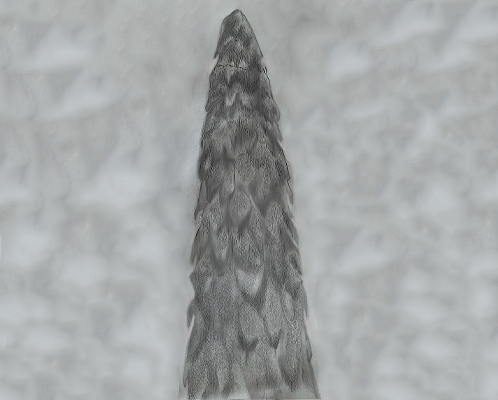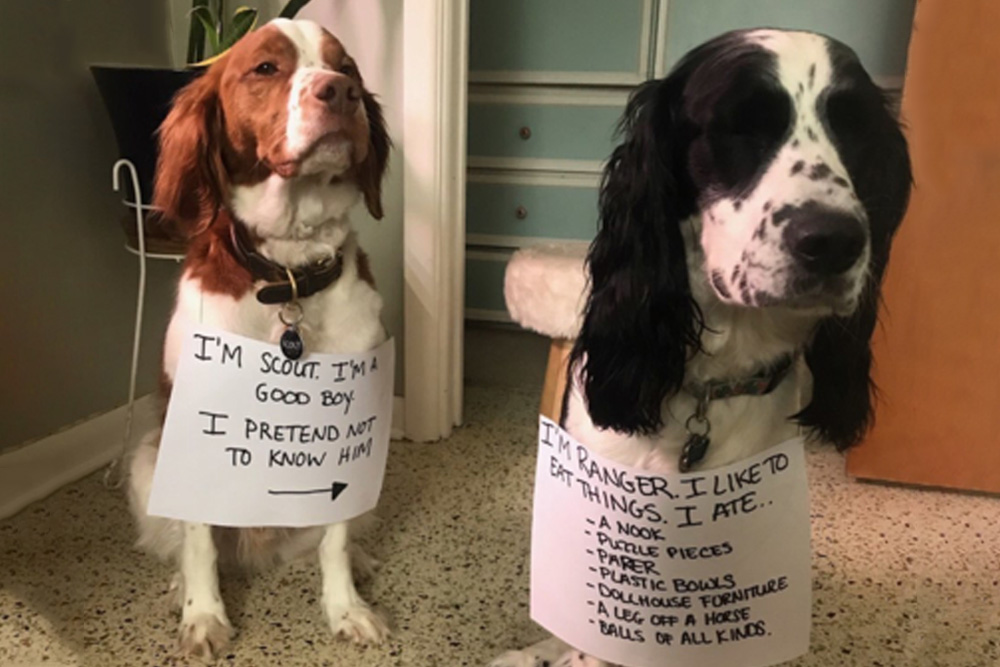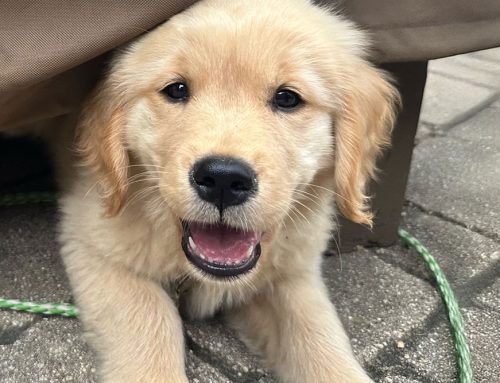Ranger had a painful surprise when he decided it would be a good idea to investigate a small critter lumbering about at his northern Wisconsin home. Ranger, a curious 5-year-old springer spaniel, thought the animal was rather interesting, so he moved a little closer to inspect. Big mistake.

Dr. Michelle McDonough surgically removed six quills from Ranger’s gums.
Unfortunately, the rodent he met was a porcupine, and it perceived Ranger as a threat. It puffed up its body and swished its tail. Either loose quills were released into Ranger’s face when the tail swatted him, or Ranger got close enough for the porcupine to brush another part of its body against Ranger’s face. The result was the same either way: Ranger’s muzzle and mouth were full of quills.
Porcupines aren’t usually aggressive. They tend to stay to themselves, so porcupines generally pose no threat to animals or people unless they get too close. The third largest rodents in North America, porcupines range from 15 to 35 pounds and have poor eyesight. Porcupines have a keen sense of smell, which comes in handy since they’re nocturnal. That sense makes up for their poor eyesight and helps them when they forage in the dark for the plants they like to eat.
Their bodies are covered in quills, which are actually stiff, hollow hairs. “What sets the hair apart from human or animal hair is each shaft has microscopic scales that act like barbed fish hooks,” said Dr. Kathy Passinault, Ranger’s veterinarian.
“A common myth about porcupines is that they are aggressive and fire their quills like missiles. In fact, however, porcupines use their protective quills only when they feel threatened, or they perceive a threat to their home or family,” said Passinault.
When that happens, porcupines puff up, and their quills move from resting flatly against their bodies to being upright. It’s similar to the way cats and dogs raise their hackles, and the older quills loosen up just like hair does in other mammals, particularly when the animals are stressed. Then, the porcupines swish their tails in abrupt movements just like cats and dogs do when they are posturing themselves defensively. The loose quills release, and the movement from the tail sends them toward the threat. When the quills come in contact with flesh, the barbs make them lodge into whatever tissue they touch. Loosened quills also lodge when an animal gets too close and has physical contact with the porcupine. That also pushes quills and their barbs into the skin.

Small stitches closed the incisions from where the quills were removed.
“Once quills are embedded in tissue, the barbs can’t work their way out of the body naturally,” said Passinault. “In fact, the quills are more likely to keep moving inward, going deeper and deeper into the tissue. They can move through muscle and even work their way into internal organs. Quills also harbor bacteria, so they can cause infections and abscesses.”
If left untreated, the pet can end up with abscesses all over the body and a systemic infection that is more complicated to treat and can even cause a pet’s death. “That’s why it is imperative for a pet to receive veterinary care as soon as possible after an encounter with a porcupine,” said Passinault. The longer the pet goes without professional care, the deeper the quills will migrate, which makes it far more difficult – and in some cases impossible – to remove them. To remove the quills, a pet must undergo general anesthesia, so the doctor can surgically remove the quills.

Magnified, you can see the hollow hair shaft’s scaly texture and how the scales form small hooks that can become lodged in tissue.
It is possible not all the quills can be safely removed, said Passinault, so in that case doctors monitor the pet to try to prevent complications. She said the best thing owners can do if their pets have run-ins with porcupines is minimize the pet’s movements and prevent them from rubbing their faces or other areas where quills may have lodged. “The best way to treat them and reduce complications is to take the pet to the veterinarian immediately,” said Passinault.
Ranger was lucky his owners recognized he needed professional care. Some quills that had lodged in his mouth had migrated deep into his gum tissue. Passinault wasn’t working the day Ranger arrived at the clinic for treatment, so Dr. Michelle McDonough stepped in to perform his surgery.
“He was heavily sedated, and I removed six small pieces of quills,” said McDonough. “He is now back to his happy self, and his owners are hoping he will not have to learn that lesson again!”
“One of the great things about Greendale Village Vet is that we all work as a team,” said Passinault. “Transferring patients between doctors is common at this clinic and gives the patients the advantage of many minds working together.”
For more information, visit Greendale Village Vet, call 414-421-1800, or go to Porcupine Quills in Dogs and Their Dangers







Leave A Comment